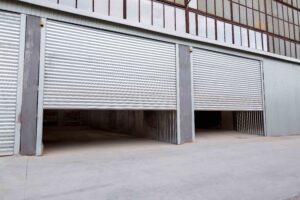 Guidelines for Safe Use of Roller Shutter Doors in UK Workplaces
Guidelines for Safe Use of Roller Shutter Doors in UK Workplaces
Legal Requirements and Safety Standards
In the UK, the use of roller shutter doors in workplaces must comply with several safety regulations. These include the Health and Safety at Work etc. Act 1974, the Provision and Use of Work Equipment Regulations 1998, and the Workplace (Health, Safety, and Welfare) Regulations 1992. The aim is to ensure these doors are safe at all times, reducing accidents and injuries.
Key Safety Measures
- Design and Installation: Professional installation is crucial, considering load capacity, door size, and site conditions.
- Regular Inspections: Employers must inspect and maintain doors to keep them in good working order.
- Safe Operation: Safe working procedures and training on proper use for employees are essential.
- Risk Assessment: Regular hazard assessments and control measures are necessary to mitigate risks.
Types of Roller Shutter Doors
- Single-Skin Steel: Common in commercial and industrial settings, these doors have a single steel layer.
- Insulated Doors: These offer better thermal performance and noise reduction than single-skin doors.
- Fire-Rated Doors: Designed to resist fire and prevent its spread between areas.
Potential Hazards and Accident Prevention
- Entrapment Risks: There’s a danger of employees getting trapped or injured during door operation.
- Falling Doors: Poorly maintained doors can fall, causing injuries or property damage.
- Collisions: Collisions may occur with partially or fully closed doors, posing risks to vehicles and pedestrians.
- Electrical Hazards: Faulty electrical components can lead to shocks or fires.
Ensuring Workplace Safety
To comply with legal requirements and maintain safety, employers should train employees thoroughly on using roller shutter doors. It’s also vital to establish clear safety guidelines and foster a culture of safety awareness in the workplace.